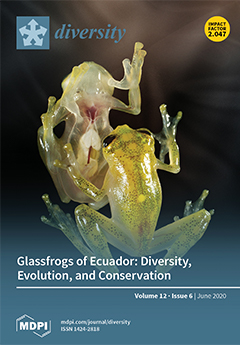Background: The impact of selective thinning on forest diversity has been extensively studied in temperate and boreal regions. However, in the tropics, knowledge is still poor regarding the impacts of this silvicultural treatment on functional diversity, especially in tropical mountain forests, which are
[...] Read more.
Background: The impact of selective thinning on forest diversity has been extensively studied in temperate and boreal regions. However, in the tropics, knowledge is still poor regarding the impacts of this silvicultural treatment on functional diversity, especially in tropical mountain forests, which are considered to be highly biodiverse ecosystems and also endangered by human activities. By evaluating the changes on functional diversity by using different indicators, hypothesizing that selective thinning significantly affects (directly or indirectly) tropical mountain forests, this work promotes sustainable ecosystem use.
Methods: A total of 52 permanent plots of 2500 m
2 each were installed in a primary mountain forest in the San Francisco Biological Reserve to assess the impact of this silvicultural treatment. Selective thinning can be defined as a controlled process, in which trees that compete with ecologically and/or valuable timber species are progressively removed to stimulate the development of profitable ones, called potential crop trees (PCT). In doing so, the best specimens remain in the forest stand until their final harvest. After PCT selection, 30 plots were chosen for the intervention, while 22 plots served as control plots. The thinning intensity fluctuated between 4 and 56 trees ha
−1 (average 18.8 ± 12.1 stems ha
−1). Functional Diversity (FD) indices, including the community weighted mean (CWM), were determined based on six traits using the FD package implemented in R software. The difference between initial and final conditions of functional richness (FRic), functional divergence (FDiv), functional evenness (FEve), functional dispersion (FDis), and Rao quadratic entropy (RaoQ) was modeled using linear mixed models (LMM). As fixed factors, we used all the predictors inherent to structural and ecological forest conditions before and after the selective thinning and as a random variable, we used the membership to nested sampling units.
Results: Functional Richness (FRic) showed significant changes after selective thinning, the other indexes (FEve, FDis, FDiv, RaoQ) were only influenced by predictors related to ecological conditions and characteristics of the community.
Full article





